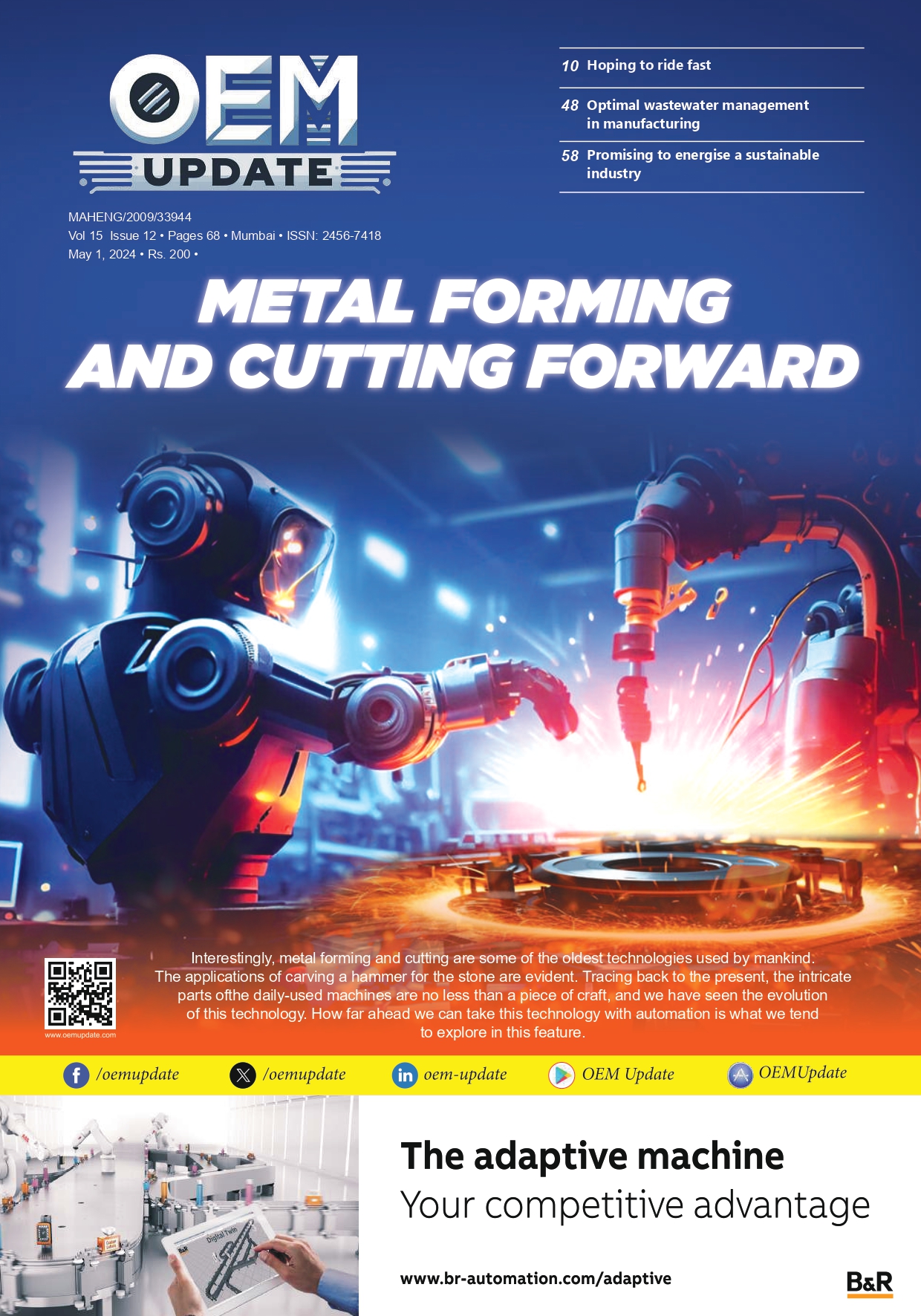Remote laser welding and cutting
January 5, 2016 6:12 pm
An overview on the advantages and potential application areas of remote laser welding and cutting
The high welding speeds coupled with an excellent automatic operation and the possibility to control the quality online during the process make the laser welding a common joining method in the modern industrial production. Thin and small weld seams and low thermal distortion are additional advantages.
Satish M. Bhat, Managing Director, Ador Welding Ltd says, “The application range is very wide covering finest welding of non-porous seams in medical technology to precision spot welding in electronics or the jewellery industry, to deposit welding in tool and mould-making and welding complete car bodies in automobile construction.”
LaserLaser stands for Light Amplification by Stimulated Emission of Radiation. The laser beam is a coherent (single phase) light of a single wavelength (monochromatic). The laser beam has low beam divergence and high energy content and thus will create heat when it strikes a surface.
The primary types of lasers used in welding and cutting are:• Gas lasers: Use a mixture of gases such as helium and nitrogen. There are also CO2 or carbon dioxide lasers. Carbon dioxide lasers use a mixture of high purity carbon dioxide with helium and nitrogen as the lasing medium.
• Solid state lasers: Nd: YAG (Rod Laser)-Neodymium Yttrium Aluminium Garnet
Yb: YAG (Disk Laser) – Ytterbium Yttrium Aluminium Garnet
Ruby Laser
• Diode lasers.
Laser beam welding is a non-contact process that requires access to the weld zone from one side of the parts being welded.
The weld is formed as the intense laser light rapidly heats the material – typically calculated in milli-seconds.
Laser output is not electrical in nature and does not require a flow of electrical current. This eliminates any effect of magnetism and does not limit the process to electrically conductive materials.
Lasers can interact with any material. It doesn’t require a vacuum and it does not produce x-rays.
Welding MethodTalking about the welding methods, according to Bhat, there are typically three types of welds: • Conduction mode:Conduction mode welding is performed at low energy density forming a weld nugget that is shallow and wide.
• Conduction or penetration mode: Conduction or penetration mode occurs at medium energy density, and shows more penetration than conduction mode.
• Penetration or keyhole mode:The penetration or keyhole mode welding is characterised by deep narrow welds. In this mode the laser light forms a filament of vaporized material know as a “keyhole” that extends into the material and provides conduit for the laser light to be efficiently delivered into the material. This direct delivery of energy into the material does not rely on conduction to achieve penetration, and so minimises the heat into the material and reduces the heat affected zone.
ConductionConduction joining describes a family of processes in which the laser beam is focused: • To give a power density on the order of 103 Wmm-2 • It fuses material to create a joint without significant vaporization.
Conduction welding has two modes: • Direct heating • Energy transmission.
Speaking on direct heating, Bhat explains, “During direct heating, heat flow is governed by classical thermal conduction from a surface heat source and the weld is made by melting portions of the base material.”
Conduction welds can be made in a wide range of metals and alloys in the form of wires and thin sheets in various configurations.
“Transmission welding is an efficient means of joining polymers that transmit the near infrared radiation. Composites can be joined by this method provided that the thermal properties of the matrix and reinforcement are similar,” observes Bhat.
Penetration laser welding Explaining about penetration laser welding, Bhat says, “At high power densities all materials evaporate if the energy can be absorbed. Thus, when welding in this way a hole is usually formed by evaporation. This “hole” is then traversed through the material with the molten walls sealing up behind it. The result is what is known as a “keyhole weld. This is characterised by its parallel sided fusion zone and narrow width.”
————————————Transmission welding is an efficient means of joining polymers that transmit the near infrared radiation.
Satish M. Bhat, Managing Director, Ador Welding Ltd
Cookie Consent
We use cookies to personalize your experience. By continuing to visit this website you agree to our Terms & Conditions, Privacy Policy and Cookie Policy.





